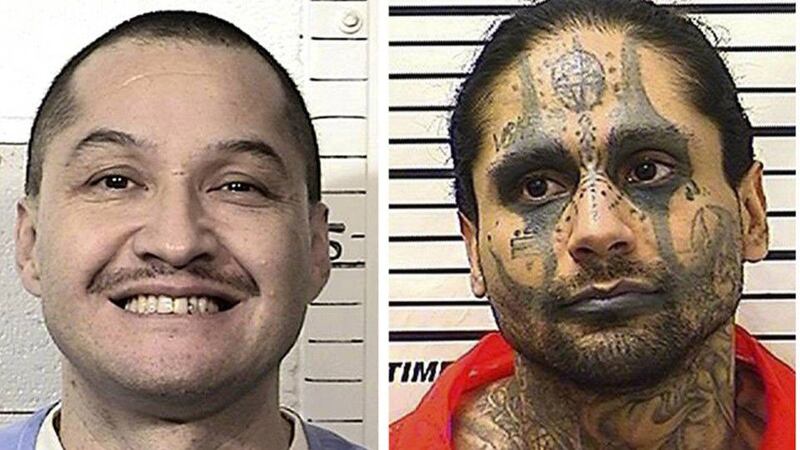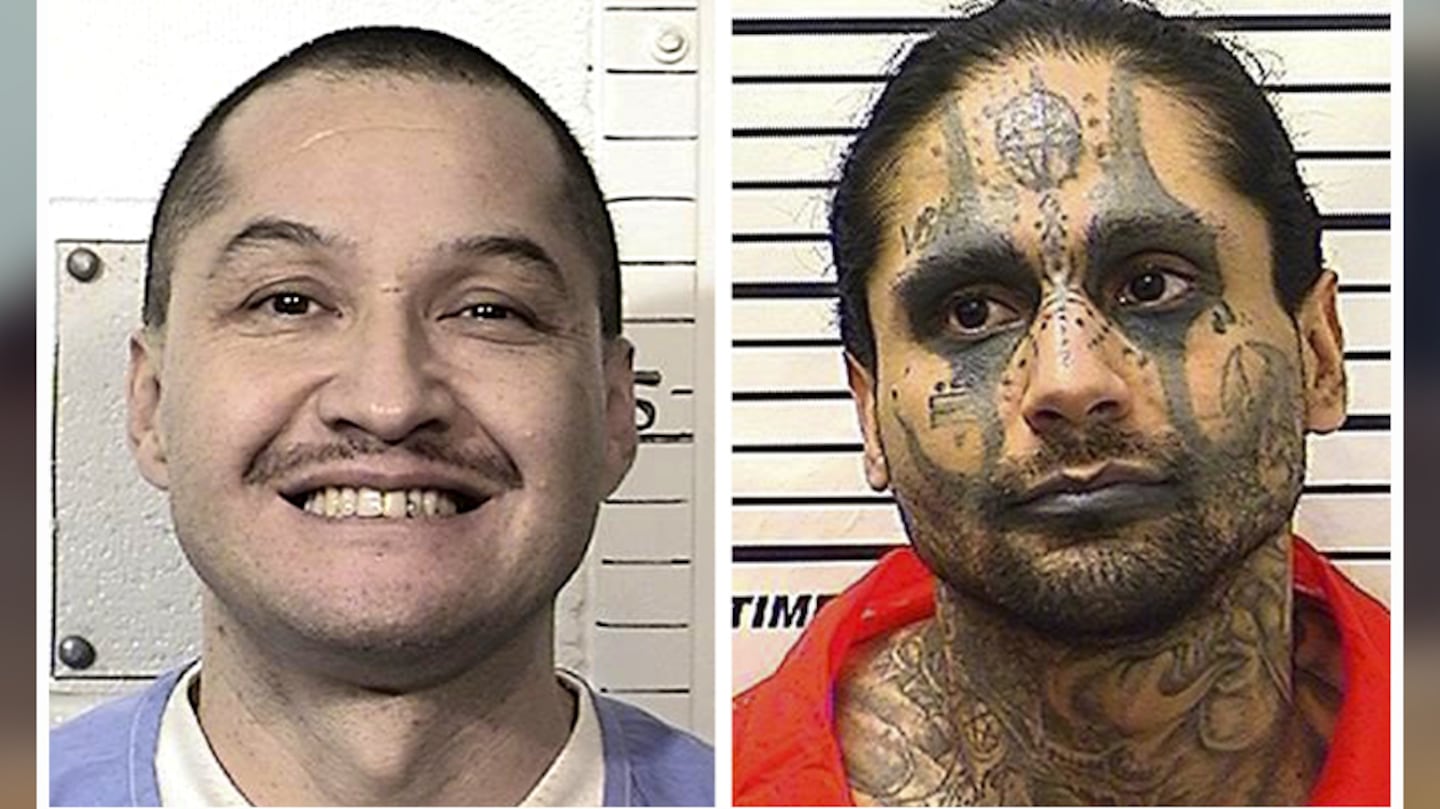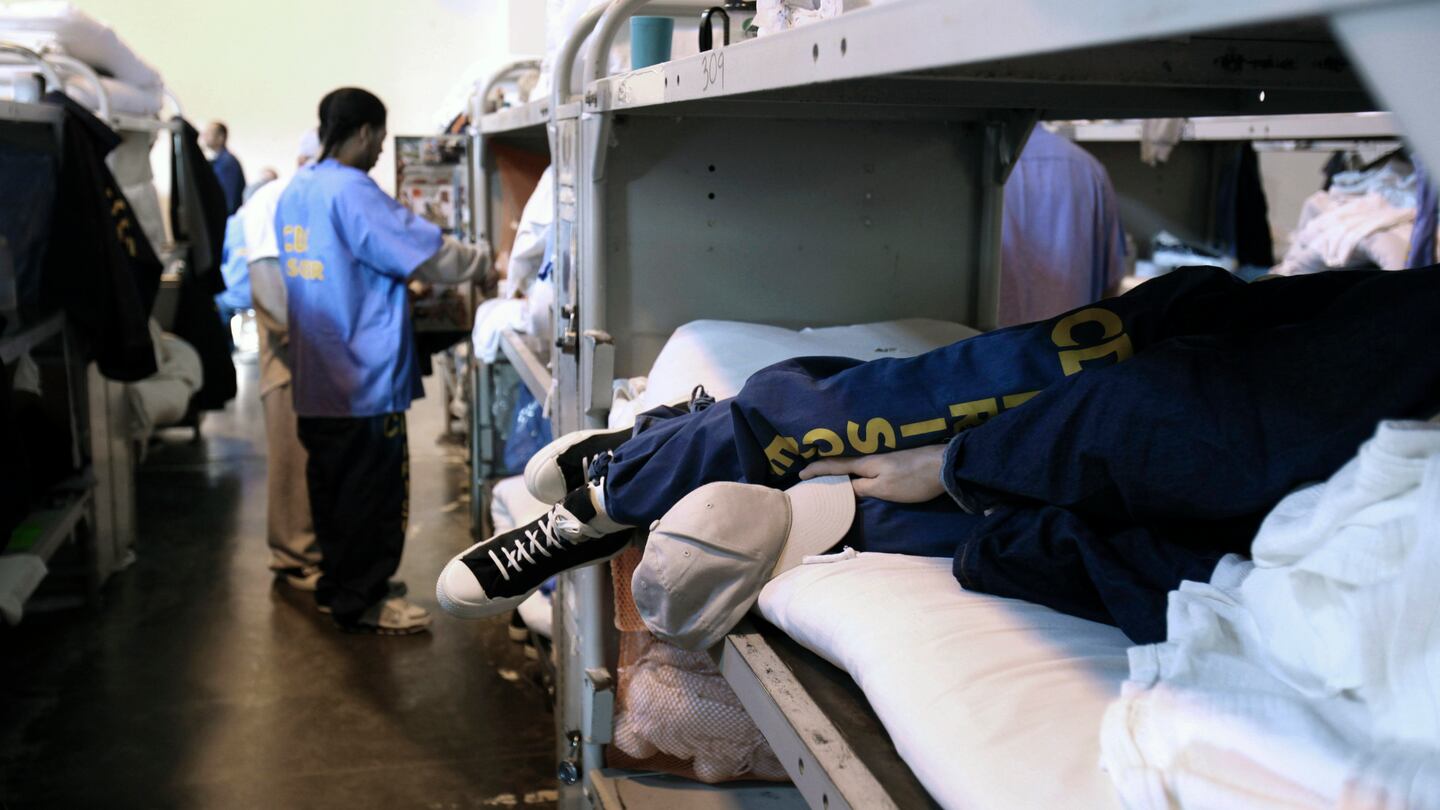CORCORAN, Calif. — Damning new reports about California’s prison system noted that it took guards at the California State Prison at Corcoran several hours to notice in 2019 after a convicted killer tortured and decapitated his cellmate.
Not only did they fail to notice the grisly scene, but the guards reported that they’d seen both men alive, the reports say.
Editor’s note: The following story contains extremely graphic details that may be disturbing to some readers.
Jaime Osuna, 33, was housed in a cell with Luis Romero, who was found decapitated and mutilated when staff members conducted morning security checks around 7:30 a.m. March 9, 2019. According to prosecutors, Osuna also cut an eye, an ear, a finger and part of a lung from Romero’s body.
Osuna was found wearing a necklace made of body parts, a federal lawsuit alleges.
All the injuries were inflicted with a homemade weapon, known as a “shiv,” that was fashioned from a razor blade wrapped in string to form a handle.
Romero, 44, bled to death. Assistant Kings County District Attorney Phil Esbenshade said in 2019 that authorities “do believe that the victim was conscious during at least a portion of the time,” according to The Associated Press.
“This is the most gruesome case that I have seen in terms of heinousness in the slaying,” Esbenshade wrote in an email.
KGET in Bakersfield created an award-winning six-part podcast about Osuna and his crimes called “The Man with a Thousand Faces.” Begin listening below.
Romero’s family filed a lawsuit last spring questioning why he had been housed in a cell with Osuna, a self-proclaimed satanist and convicted murderer with a history of attacking his cellmates.
Osuna also suffers from significant mental illness, according to KGET. His diagnoses include unspecified schizophrenia spectrum disorder, antisocial personality disorder, borderline personality disorder and post-traumatic stress disorder.
A ‘veil of secrecy’
Romero’s gruesome homicide, which made national headlines when it took place, was thrust back in the spotlight earlier this month when the state Office of the Inspector General, which is responsible for independent prison oversight, released its semi-annual reports on the prison system’s operations.
The reports did not paint California Department of Corrections and Rehabilitation officials in a flattering light.
“The department’s handling of the case was poor,” the inspector general’s office says in one report, according to the Los Angeles Times. “In the OIG’s opinion, the special agent continually resisted the recommendations of the department attorney regarding conducting interviews and obtaining evidence.”
The reports, like the lawsuit filed by Romero’s mother, question why Romero, who had just been transferred to Corcoran from Mule Creek State Prison, was placed in a cell with the notoriously dangerous Osuna.
Romero had already spent 27 years in prison for the gang-related shooting death of a Compton woman in 1992, when he was a teenager. The AP reported that he was nearing parole eligibility when he was slain.
The new reports also accuse corrections officials of a shoddy investigation and lackluster efforts to discipline the guards who did not do their jobs properly.
“Two officers conducted counts and, even though an incarcerated person was dead, allegedly falsely reported in their documentation that they observed the decapitated incarcerated person alive,” one of the reports states. “A third officer and a fourth officer allegedly did not report that they had each observed the first two officers fail to properly conduct the counts.
“The first officer also allegedly lied during his Office of Internal Affairs interview.”
The report further states that the special agent investigating the brutal murder failed to interview several key witnesses, and he never investigated whether jail officials’ decision to place the two convicted killers in a cell together was appropriate.
“Further, the hiring authority delayed conducting the investigative and disciplinary findings conference, delayed serving disciplinary actions on the officers, and entered into settlement agreements that reduced the penalties without identifying any new evidence, flaws, or risks that would have justified the reductions,” the report states.
The Office of the Inspector General’s investigators argued that the CDCR’s attorney should have requested an investigation into why the two inmates were placed in the same cell.
“(The attorney) should have recommended that the hiring authority dismiss the first officer due to the serious nature of both his actions and the consequences,” the report states. “In addition, the department attorney delayed drafting the disciplinary actions for the first and second officers, resulting in the department serving the disciplinary actions 36 and 46 days after policy required.”
Read the report from the Office of the Inspector General below.
State prison officials dispute the findings, saying they had conducted a “thorough and complete investigation from the very beginning, the Times reported.
Justin Sterling, the attorney representing Romero’s family, told the newspaper that the reports detail the “veil of secrecy” the prison system uses to hide jailer misconduct.
“The idea that my client had to sue in order to get basic questions answered about her son’s death is disheartening,” Sterling said.
‘If anybody deserves the death penalty’
The lawsuit filed by Dora Solares offers a more detailed look into what allegedly took place inside that small cell in March 2019. According to the filing, Romero had been transferred to Corcoran on March 7, two days before his body was found.
For unknown reasons, he was placed in a cell with Osuna, who had been received by CDCR on May 15, 2017, from Kern County. Osuna was serving life without parole.
Osuna had pleaded guilty to avoid the death penalty in the November 2011 torture and murder of Yvette Pena, 37, in a Bakersfield motel room. According to KBAK in Bakersfield, prosecutors said Pena had been found dead at the El Morocco Motel.
The mother of six had been gagged and there were multiple “stabbing instruments” protruding from her back, the news station reported.
Photos from the courtroom show the heavily tattooed Osuna offering the judge a thumbs-up gesture as he was sentenced to spend the rest of his life in prison. Another image shows him waving at Pena’s family in the gallery.
“It’s not very often, even as somebody who prosecutes murders for a living, that I come across somebody who’s just plain evil,” Kern County Deputy District Attorney Nick Lackie told KBAK. “If anybody deserves the death penalty, Jaime Osuna does.”
Pena’s family was more deserving of justice and the ability to move forward from the tragedy, he said.
Jaime Osuna gives thumbs up to Judge John Somers as he is sentenced to life without parole for the murder of Yvette Pena six years ago. pic.twitter.com/FnyAPIg0Pj
— Felix Adamo (@tbcpix) May 15, 2017
Even behind bars, Osuna’s violent streak continued at the expense of fellow inmates, Solares’ lawsuit states. He was charged with attempted murder in one such attack and recommended for placement in a psychiatric ward.
The suit alleges that prison officials were trying to expedite that placement when Romero arrived at Corcoran, where prison officials “chose to bypass the standardized administrative committee process that is required before forcing one inmate to share the cell of another.”
Ordinarily, the committee must decide if an inmate is fit to share a cell with another person. If he is fit, they must then find a suitable inmate to pair with him.
The lawsuit accuses officials of failing to do their due diligence and instead locking Romero up with Osuna, who had apparently never shared a cell.
“Plaintiff is also informed that CDCR was in possession of documents from Jaime Osuna’s own lawyers and medical team warning CDCR of Osuna’s propensity for extreme violence, insatiable desire to kill, and need to be held in a psychiatric ward, not in a prison with other inmates,” the court document states.
In 2012, while awaiting trial in Pena’s murder, Osuna was caught with a 5-inch metal “shank” inside the Kern County Jail. Not long after that incident, a jail guard found him with a “hatchet-like” weapon in his cell.
A few months later, despite being confined to a single cell and allowed no contact with other inmates, Osuna “found his way into another inmate’s cell, where Osuna stabbed and slashed the face of the inmate, resulting in 67 stitches,” the lawsuit states.
“When prison officials requested to photograph the inmate’s injuries, he declined, noting that he didn’t want to risk Osuna getting copies of the photos and adding them to his collection of ‘trophies,’” according to the document.
Click here to read the lawsuit in its entirety. Warning: The document contains graphic details.
Prison reports obtained by the family’s lawyer show that in 2016, Osuna was deemed to be high-risk for assaulting staff and listed as an administrative segregated inmate.
A grisly end
Despite the risks, the jailers placed Romero into the cell with Osuna and failed to conduct the regularly scheduled nightly safety checks, “even after a bedsheet was visibly draped along the bars inside this cell, preventing anyone outside from peering in.”
“Routine safety checks are supposed to occur at least every hour — and normally every 20 minutes — and a guard station is located around 100 feet (from) the cell that held Romero and Osuna,” the lawsuit states.
The checks were not conducted for at least four hours, and no one ordered the inmates to remove the bedsheet, the suit claims. The filing also argues that the guard station was empty during that time frame and no corrections officers responded to the loud noises that presumably echoed from the cell as Romero was slowly slain.
“The delay of nighttime safety checks was so severe that Osuna had time to decapitate Romero, make a necklace of Romero’s body parts and cover the cell in blood, all with a small razor,” the document alleges.
Romero’s autopsy described exactly how brutal his slaying was. Besides the decapitation and maiming, his spine was severed and the corners of his mouth were cut into an exaggerated smile.
The slain inmate’s body had been posed to maximize the shock when he was found, the lawsuit states.
>> Read more true crime stories
Following Romero’s slaying, Osuna was charged with murder, with multiple special circumstances, torture and mayhem, according to reports at the time. The special circumstances — including the prior murder conviction for which he was initially imprisoned — made him eligible for the death penalty.
KGET reported in January that Osuna has been found incompetent to stand trial in Romero’s killing. Two psychiatrists testified that he is unable to understand the proceedings against him or to assist in his defense.
Osuna refused to cooperate with the competency proceedings, the doctors said. They relied on hundreds of pages of medical and mental health records to come to their decision, according to the news station.
State prison records show Osuna is being held at the Salinas Valley State Prison, which has a psychiatric inpatient program.
©2021 Cox Media Group













